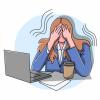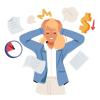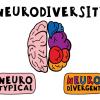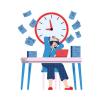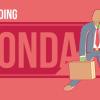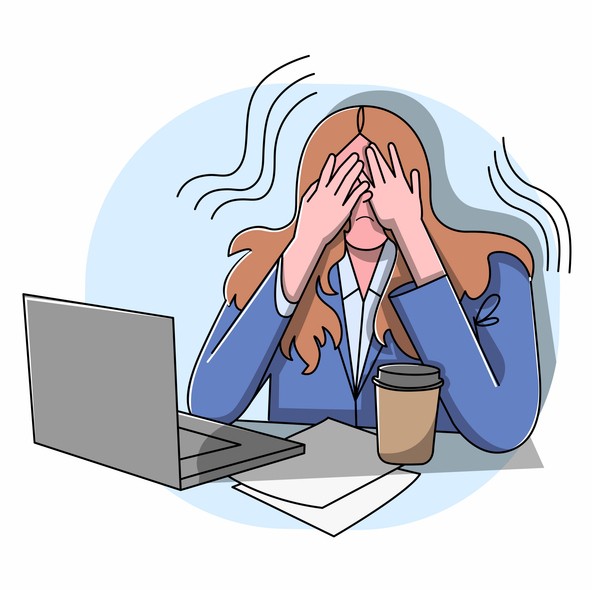
Why Employee Well-Being Isn't Optional Anymore
It's Wednesday. My coffee's cold and I keep pretending that means I've been productive. I'm in Yellow Zone which means I can write this but everything takes twice the energy it should.
We teach foundation skills that make every other skill work. The ones that fail first under stress. The ones nobody teaches.
Gallup just published research showing well-being at work isn't the soft HR stuff they stick in job postings to sound caring. It's foundational to whether you can sustain performance without imploding. (Gallup.com) Like, actually foundational—the kind of thing that determines whether you make it through Q4 or quietly start updating your resume at 2am.
77% of workers worldwide are disengaged. (Gallup 2024) When I read that I mostly thought "only 77%?" My Slack feels like 100%. Maybe 110% if you count the people who are online but clearly just moving their mouse every few minutes.
The Five Things That Actually Matter
Gallup breaks well-being into five elements. Not in the "nice to have" way. In the "your performance collapses without these" way:
Career – liking what you do every day. Not tolerating it. Not surviving until Friday. Actually liking it. (Gallup.com) When career meaning collapses, resilience through transitions becomes essential.
Social – actual friendships, not LinkedIn connections or "professional relationships" where you schedule coffee you'll reschedule three times. Real connection and communication that sustains you.
Financial – managing money without 3am panic about whether you can afford to quit. Financial stress amplifies everything else, making stress mastery even more critical.
Physical – energy that doesn't come exclusively from caffeine and spite. When physical health fails, rest and recovery becomes non-negotiable.
Community – belonging somewhere. Feeling like you're part of something that isn't just a shared calendar.
These map directly to what we call the Life Skills Pillars—Emotional Mastery, Communication & Connection, Motivation, Self-Worth, Rest & Recovery. When one collapses, the others can't carry it. That's not theory—that's Tuesday.
The Stat That Broke My Brain
Wait, I should've put this earlier. My brain keeps jumping. Where was I going with... right, burnout risk.
If you're highly engaged but not thriving across those five elements? 61% more likely to burn out. 48% more likely to report daily stress. Twice as likely to feel daily sadness or anger. (Gallup.com)
Read that again. Highly engaged. Caring about your work. Showing up. And you're more at risk.
Doing "well" at work doesn't mean you're doing well.
And yes, engagement is great. Until it isn't. Until it eats you alive. Until you're lying in bed at 11pm mentally drafting emails you won't send until morning because you know sending them now makes you look unhinged.
This is ND Route territory—when your executive function is maxed keeping you on task and your workplace offers zero support for regulation. The system degrades. Green Zone 🟢 (where creativity and empathy are accessible) straight through Yellow 🟡 into Red 🔴 where you're just trying not to make mistakes or cry in the bathroom. If focus and self-management are already maxed, you need tools that work at reduced capacity.
I'm in Yellow right now. The meta-awareness doesn't help.
What You Get Back
Every dollar in mental health returns four dollars in productivity. (WHO 2023) That's the macro stat. Personally? Bandwidth. Focus. A weekend that actually feels restorative instead of spending Saturday recovering from the work hangover and Sunday dreading Monday.
Most corporate wellness programs throw a gym membership at you and call it solved. Maybe a meditation app subscription. A wellness seminar that assumes you have the executive function to implement seventeen new habits by Tuesday and also remember to drink more water.
Gallup shows physical interventions are only part of it. You need the whole ecosystem. Clarity—confidence and calm under pressure when presentations loom. Career meaning that doesn't make you want to scream into the void—resilience through life transitions. Stress regulation that works when you're already maxed—stress mastery and work-life balance. Capacity to actually rest—rest and recovery mastery.
The Zones Framework
This is where the Zones Framework clicked for me. I didn't design it in a vacuum or because I read a book about productivity. It was me trying to stay functional without melting down in meetings. Without sending emails I'd regret. Without staring at my screen for forty minutes achieving nothing.
Tools that scale. Full version when you're Green 🟢. Smaller version in Yellow 🟡. Tiny version in Red 🔴. Can't-Even ⚫ version that just says "breathe, you're not broken, this will pass."
Most tools assume you're starting from optimal. I have never once been optimal. You probably haven't either.
The Bias Nobody Mentions
Optimism Bias: you think next week will be calmer. That after this project ships you'll finally have space.
It won't.
44% of professionals report daily workplace stress—record high. (Gallup 2024) 76% say stress negatively affects their health. (APA 2023) And I should've put these stats earlier but here we are.
Next week won't be different unless you change the structure. Which is exhausting to think about when you're already exhausted. When productivity and achievement feel impossible, the problem isn't willpower—it's capacity.
How Emergent Skills Works
We don't tell you to "reduce stress." We build infrastructure so you have actual capacity.
Zones / Routes / Path
Language for what's happening. Yellow Zone fatigue vs Red Zone survival. Tools that work at your actual state—whether you need emotional mastery when you're spiraling or just need to get through the next hour.
Connected pillars
Confidence, Stress, Focus, Communication aren't separate. When one breaks, they all feel it.
Reset → Build → Thrive
30 minutes gets you stable. 30 days builds momentum. Beyond that, autonomy instead of desperation.
The Numbers
Top quartile engagement: +23% profitability, way lower turnover. (Gallup)
High-development cultures: +11% profit, double retention. (Gallup 2019)
Replacing someone costs 1.5-2× their salary. (SHRM 2023)
Companies lose $8.8 trillion annually to disengagement. (Gallup) Only 24% of US employees think their employer cares about wellbeing. (Gallup.com)
You already know the system's broken. You're living it.
What Works When You're Already Tired
You need tools that assume you're starting from Yellow 🟡 or Red 🔴, not Green. That build emotional mastery and self-forgiveness alongside productivity and achievement. That connect motivation and emotional resilience to rest and recovery instead of treating them like opposites or pretending you can just "push through."
Well-being isn't optional. It's the soil high performance grows in. When soil's depleted you might harvest short-term results—one more sprint, one more all-nighter, one more quarter of running on fumes—but you pay for it in your body, your sleep, your relationships, your ability to care about literally anything.
McKinsey says better workforce health adds $3.7-11.7 trillion in global value. (McKinsey Health Institute 2025) That's 4-12% of global GDP. But what you really get back is the capacity to handle one more thing without completely unraveling.
This piece lives in Reset—the phase where you just need to stop free-falling and find stable ground. If that's where you are right now, start with one pillar. One zone. One tool that works even when you're half-functional and running on spite. Maybe start with building confidence and self-worth when imposter syndrome hits hardest.
Sustainable performance isn't about pushing harder. It's about building the capacity that makes showing up feel possible instead of punishing.
I'm calling it here. My Yellow Zone just tapped out and my dog is staring at me like I owe him a walk. Which I do.
What's in it for you?
Energy. Bandwidth. Caring about work without sacrificing everything else.
Most programs assume optimal.
We assume tired.
Written from Yellow Zone on a Wednesday.

